How Long Does It Take to Train a Service Dog or Guide Dog? Facts & FAQ
Updated on
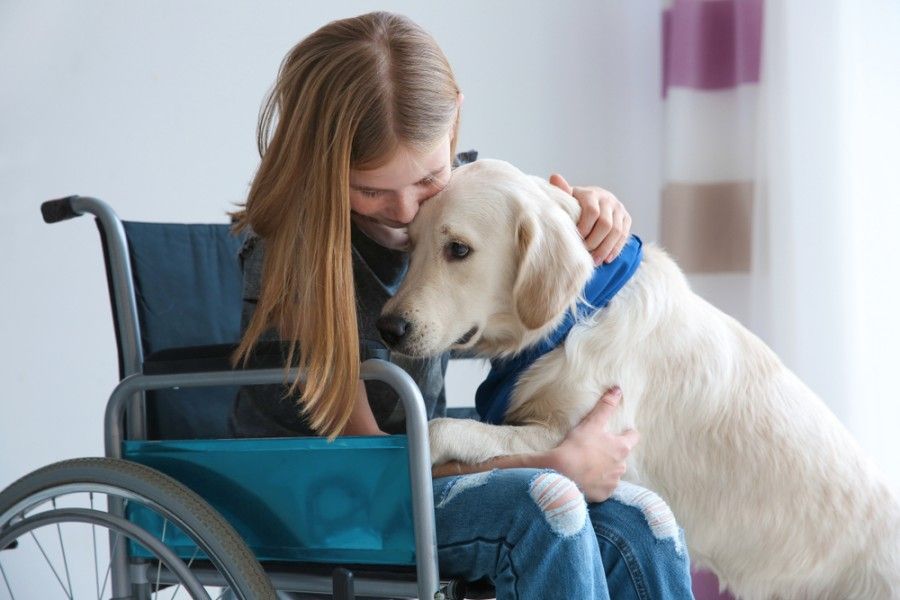
Click to Skip Ahead
Dogs are important parts of many families, but they are vital for people in need of guide or service dogs. These dogs are immensely helpful for all kinds of people with disabilities. However, they need to go through incredibly extensive training. So, how long does it actually take to train these dogs?
Depending on what they are being specifically trained for, it can take about 1 to 2 years to train a service dog and around 5 to 9 months for a guide dog.
Here, we look at what goes into training a dog to become a service or guide dog and a few of the differences between the various kinds of working dogs.
What Are Service and Guide Dogs?
Technically, guide dogs are service dogs. Guide dogs, or seeing-eye dogs, aid visually impaired individuals by guiding them and providing them with independence.
A service dog helps individuals with a disability and is trained to do specific tasks related to each individual’s disability.
- Guiding the visually impaired
- Alerting the hearing impaired to noises
- Retrieving items
- Pulling a wheelchair
- Alerting to diabetes or seizure attacks
- Interrupting self-harming behavior in autistic individuals
- Calming anxiety attacks in individuals with PTSD
- Reminding people to take prescription medications
As you can see, service dogs provide quite a variety of services for people in need of extra support.
What Dog Breeds Can Be Service Dogs?
In the 1920s, German Shepherds were the only breed used as service dogs, but today, dogs can be practically any size or breed, though this depends on what the dog is needed for. They should be the right size to provide the proper support. For example, a Chihuahua wouldn’t be the best breed for pulling a wheelchair, but with the right temperament and training, they can assist someone who is hearing impaired.
Large dogs are needed as guide dogs. Labrador Retrievers, Golden Retrievers, and of course, German Shepherds tend to be the most common breeds for this service.
For people with mobility issues, breeds like Saint Bernards, Great Danes, and Bernese Mountain dogs have the strength and the height to provide the right assistance. Toy Poodles (who are renowned for their intelligence) can be trained to help people with diabetes by alerting them to variations in their blood sugar.
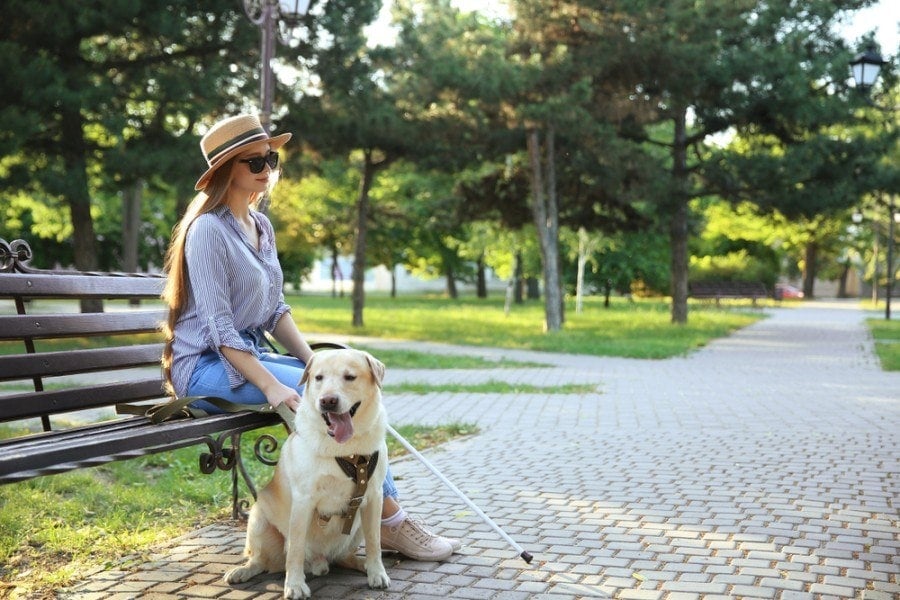
What Kind of Temperament Should They Have?
Practically any dog can be trained as a service dog. However, certain aspects of a dog’s temperament are necessary for them to be successful in receiving service dog training.
- Friendly and calm
- Well socialized
- Willing to please
- Quick to learn
- Able to retain training and information
- Ready and willing to follow their owners anywhere
- Alert
- Nonreactive to strangers and their environment
Dogs that already have these traits might be good candidates to train as service dogs.
Can You Train Your Own Dog to Be a Service Dog?
If your dog exhibits the aforementioned temperament and characteristics, then yes, you can train your own dog. You can purchase a service dog that has already been trained, but this can be quite expensive. The steps that you need to take to train a dog yourself are as follows:
- Start by adopting a dog that has a low energy level and a calm temperament. You’ll need a dog that is at least 6 months old, is eager to please, is calm, and doesn’t exhibit aggressive behaviors.
- Train your dog to perform a task that will aid a specific disability. This takes time and patience using positive reinforcement. You can also ask for help from a professional trainer, or there are many online resources that you can use. Part of this training also includes a great deal of socialization. Your dog should feel comfortable performing tasks in public.
- Once your dog is fully trained and if you’re in the States, you can register them here (or here for Canada). It isn’t required by law to register your dog, but it will make your life easier to make things official, and you can order a vest, ID, and certificate. These will provide visual cues to the public that your dog is a working dog, which also means no one can interact with your dog unless you say that it’s okay.
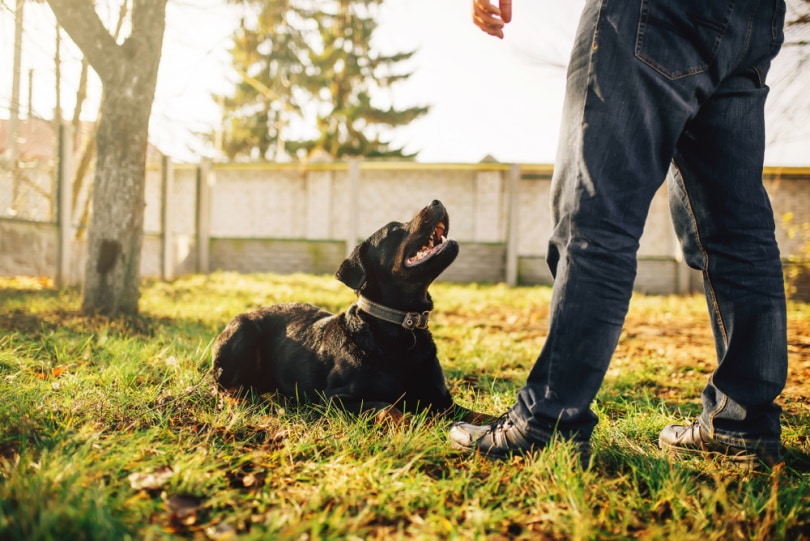
How Long Does It Take to Train a Service Dog?
Training typically takes anywhere from 1 to 2 years, but how long it takes to train a service dog depends on several factors, particularly if you’re training the dog yourself.
Age of the Dog
Training should start at about 6 months of age, which is when you can begin with basic training, such as housebreaking and socialization. Training sessions should also be short and interesting because puppies don’t remain quite as focused as older dogs.
You can train older dogs, as long as they have that all-important calm temperament, but be prepared to be extra patient.
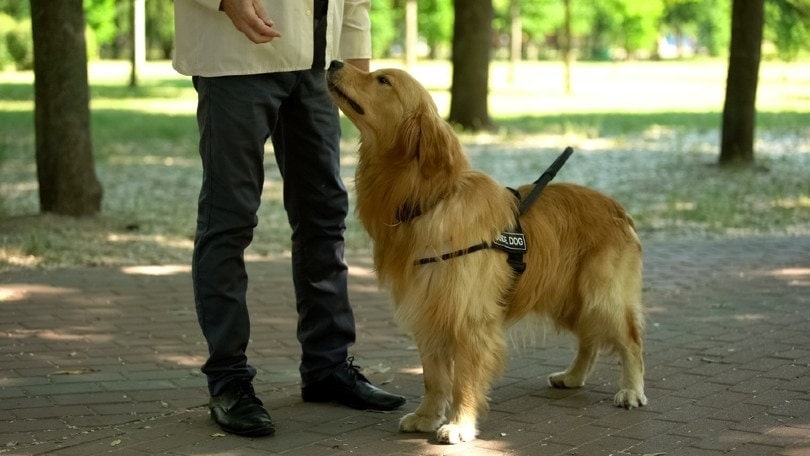
Dog Breed
Beyond the size of the breed being a factor for being a service dog, there are also the characteristics of the breed. Goldens, Labs, and German Shepherds are popular guide and service dogs because of their temperaments.
Some breeds have a high prey drive (like most hounds), are easily distracted, or might bark in circumstances when you need quiet and calm. The more difficult the dog is to train, the longer it will take.
Current Level of Training
If the dog already has a certain amount of basic and obedience training and is well-behaved in general, it will take much less time for the service training than another dog that has to start at the beginning.
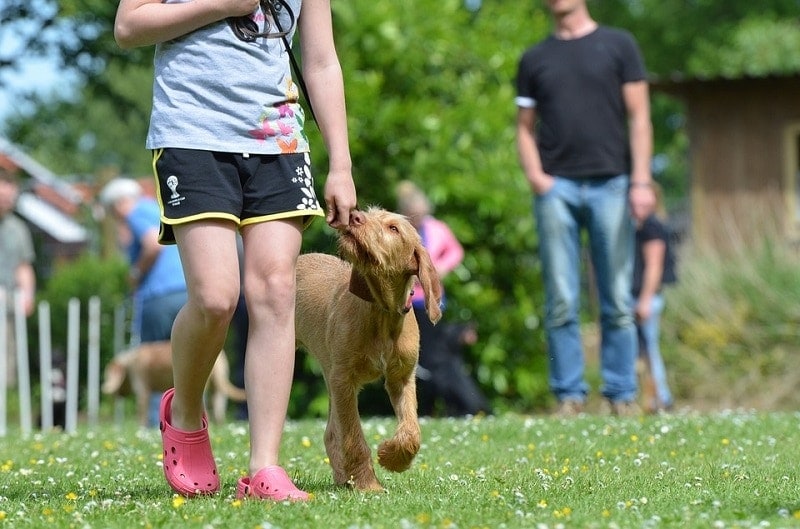
Behavioral Issues
Dogs with behavioral issues generally won’t make good service dogs. However, with plenty of training, patience, and reassessments, it’s quite possible for a dog that started with mild behavioral problems can become a service dog. It will take longer to train one of these dogs into a working dog.
Training Too Fast
If the trainer has too high expectations and rushes the training process, it could make the training time take even longer. Taking the training slowly and with patience will be quicker in the long run. Rushing the dog through the training process can potentially lead to behavioral problems.

Rewards (Reinforcement)
If your dog is given rewards that make them happy and keep their interest, the training can go by quicker. Some dogs are food-motivated, so using treats can work quite well. Others might be more motivated by toys or playtime. Dogs can be easily distracted, and rewards can increase their attention and motivation during training sessions.
What Tasks Do Service Dogs Perform?
- Retrieving and carrying items
- Finding items or people on command
- Helping to avoid moving vehicles and obstacles
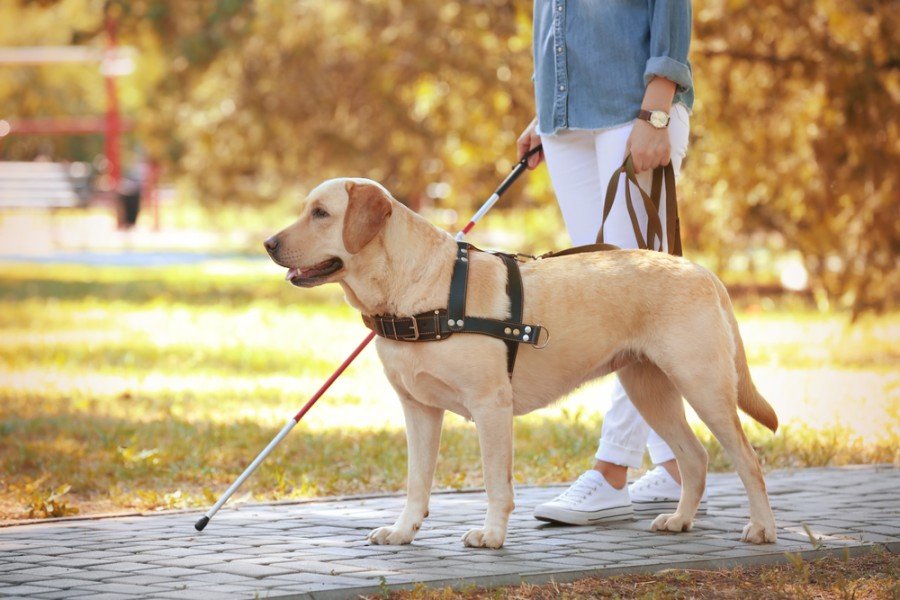
- Retrieving items that were dropped
- Warning of approaching vehicles
- Carrying messages
- Alerting to the presence of people and sounds
There are numerous categories under service dogs. It depends if there’s a mobility or medical issue, as well as conditions like autism or PTSD.
- Turn lights off and on
- Open and close drawers and doors
- Call 911 in an emergency
- Help with dressing and undressing
- Find help on command
- Helps with insomnia and nightmares
- Detects changes in blood sugar levels, or allergens
- Guide owner away from stressful and dangerous situations
There are other kinds of jobs that don’t fit under the service-dog category but are still essential to the people who need them, such as therapy and emotional support.
Conclusion
We cherish our dogs because they are essential members of the family, but service dogs truly save people’s lives!
Don’t forget: If you don’t own a service dog, you should never approach a working dog unless the owner says that it’s okay. These dogs typically wear vests, so they’re easy to identify in public. Also, not everyone has the kind of disability that is obvious at first glance, so never make assumptions about someone who has brought their dog into the grocery store.
Service dogs go way beyond pets and companions. They can drastically improve the quality of life for the people who need them.
See also:
Featured Image Credit: Africa Studio, Shutterstock
















